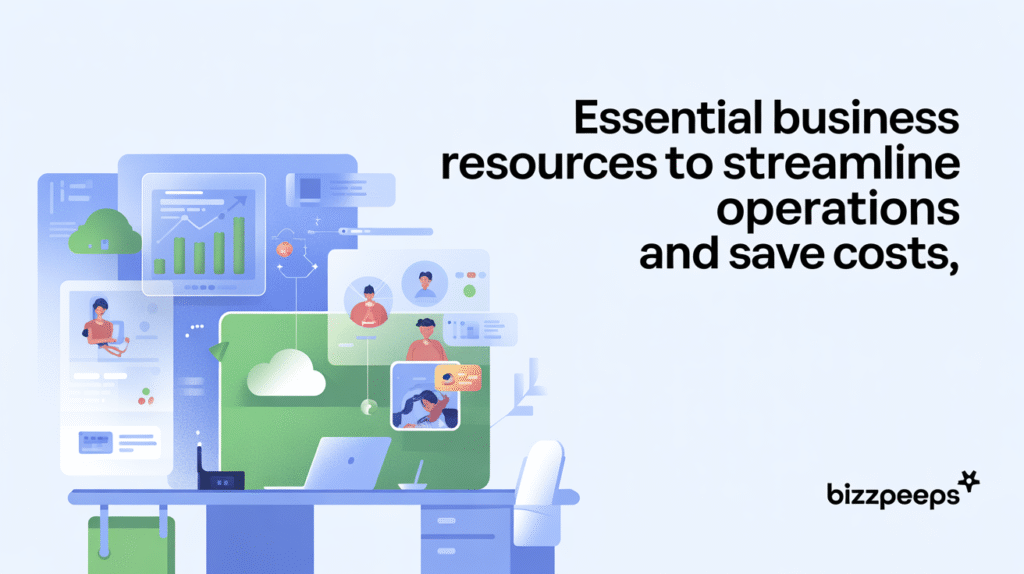Running a business today is no easy job. Between managing people, dealing with rising costs, chasing customers and keeping operations smooth, entrepreneurs feel the heat every single day. That’s exactly why the right business resources can make such a big difference. They are not just some fancy apps or guides, they are actual lifelines that help save cost, reduce stress and create more efficiency inside a company.
In this blog we dig into free business tools, operational efficiency tips, small business support, resource management strategies, productivity-enhancing apps and even a few other areas that sometimes people ignore but they matter a lot.
Why Businesses Need Strong Resources
Every business, whether it’s a 2-person startup or a growing company with multiple offices, faces the same struggle. Time is short, budgets are tighter and mistakes are costly. Having the right resources is like having a map while traveling. You can take shortcuts, avoid dead ends, and reach the goal quicker.
Sometimes entrepreneurs think resources always means money. But actually, resources are tools, knowledge, connections, and even support systems. Without them, work gets messy. With them, operations are smoother.
Free Business Tools that Actually Work
Not every entrepreneur can afford high-priced software. Luckily, there are free business tools out there that actually help with day to day tasks.
Take communication for example. Platforms like Slack free plan or Microsoft Teams basic version help small groups stay connected. Same goes for project management. Trello or Asana’s free tier makes it easier to assign tasks and track progress without paying a cent.
Financial tracking is another headache. But tools like Wave accounting or Zoho free plan let you handle invoices, track expenses and check cashflow without hiring a full accountant. Of course, when the business grows, you may upgrade, but for beginners these are golden.
And let’s not forget free design tools. Canva has become almost essential for small teams to create posters, social media content, and even presentations. These kind of tools save money while giving professional look to the brand.
Operational Efficiency Tips Nobody Should Ignore
Streamlining operations isn’t just about buying software. It’s about building habits and systems that cut waste.
One simple trick is documenting processes. When your team knows the steps to follow, there is less confusion and less time wasted repeating instructions. Another tip is automating repetitive work. For example, schedule social media posts in bulk or use auto-invoicing for clients.
Also, never underestimate the value of feedback. Asking your team “what is slowing you down” opens the door to easy wins. Sometimes it’s as small as changing file-sharing platforms or reorganizing schedules. Efficiency is not always about massive transformation, sometimes it’s just fixing small roadblocks.
And yes, don’t ignore training. A well trained employee does work in half the time compared to someone confused. This training itself becomes a business resource that keeps paying off in long run.
Small Business Support Networks
A lot of entrepreneurs try to do everything alone. That’s one of the biggest mistakes. There are so many small business support groups, both online and offline, that provide help for free or very low cost.
Local chambers of commerce, small business associations, even Facebook or LinkedIn groups often share valuable insights, free templates, mentorship and funding opportunities. These support networks are underrated but they are critical.
In fact, small business grants or low-interest loans often come to those who are connected with these networks. Staying isolated not only increases stress but also makes you miss out on opportunities.
Remember, business is not just about competing. Collaboration is also a survival strategy.
Resource Management Strategies for Long-Term Growth
Even when you have tools and networks, managing them properly is the real game. Many businesses fail not because they lack resources but because they misuse them.
For example, buying too many subscriptions that overlap. One team uses Dropbox, another team uses Google Drive, a third uses OneDrive. The result? money wasted and confusion. A better approach is to standardize tools across the company.
Also, leaders should constantly audit what resources are working and what are not. If a paid app is not being used, cancel it. If a free resource is saving hours, invest more in it. This type of resource management strategy keeps costs down and productivity up.
Another important area is human resources. Your people are the biggest asset. Keeping them motivated and engaged is far more effective than spending extra on external tools. A motivated team will adapt to almost any tool you give them.
Productivity-Enhancing Apps Worth Trying
Apps are not magic, but the right ones change the game. For communication, Slack and Zoom are obvious. But productivity also needs focus tools. Apps like Notion help organize projects, notes and databases in one place.
Time tracking apps like Toggl or Clockify are useful to see where the team is actually spending hours. Many businesses realize after tracking that too much time is wasted on emails. That’s when they shift to more structured communication.
There are also collaboration apps like Miro for brainstorming or ClickUp for end-to-end project tracking. These are not just fancy, they actually make remote and hybrid teams more effective.
But one word of caution: don’t overload your team with too many apps. Productivity increases when you reduce complexity, not add it. Choose wisely.
Extra Insights Businesses Often Miss
Apart from the obvious, there are other business resources entrepreneurs should keep in mind:
- Knowledge resources: eBooks, online courses, YouTube tutorials. These are often free or very cheap yet help improve skills.
- Networking opportunities: attending events or webinars creates valuable connections that sometimes lead to partnerships or clients.
- Customer feedback tools: free survey platforms like Google Forms give real insights into what customers want.
- Cloud storage: Google Drive or Dropbox free storage can be enough for small teams and saves cost on physical servers.
These are often overlooked but provide massive value when used properly.
Conclusion
At the end of the day, success doesn’t come from working harder only. It comes from working smarter. By using the right business resources, tapping into free business tools, applying operational efficiency tips, and leaning on small business support, entrepreneurs save money while scaling their companies.
No single app or strategy will fix everything, but putting together a smart mix of resource management strategies and productivity-enhancing apps creates a strong foundation.
For small businesses trying to survive in competitive markets, every cost saved and every hour optimized is another step toward stability. The choice is simple: either struggle alone, or embrace the tools and networks that exist to support you.




